The STL file format has become recognized as the standard for RP machines. Note that STL files are produced by CAD systems that are based on surface and/or solid modeling only. 2-Dimensional and Wireframe CAD systems do not output STL files.
STL files can be saved in ASCII or Binary format. ASCII format creates very large file sizes. Parts that have an extremely large file size usually are in an ASCII format or contain over 150,000 triangles. Files such as these can cause problems with file transfer over the web and hinder the process for setting up Rapid Prototype machines.
An indication as to if you have a good resolution STL file is by looking at the amount of triangles that were generated. On average an STL file (in Binary format) that has the number of triangles, which fall between 25,000 and 75,000, will usually be a good resolution file. The exact number of triangles is geometry dependent, which in turn causes variations between part designs. You can also look at the STL file and see if the resolution is too course or over tessellated. The images to the right show examples of different quality STL files.
I suggest generating all .STL files in “Binary” format using a Chord Height (Deviation) setting of .0005 of an inch (.0127mm). Angle Control is not as important and can be left at the default setting.
STL File format
The STL file format has become recognized as the standard for RP machines. Note that STL files are produced by CAD systems that are based on surface and/or solid modeling only. 2-Dimensional and Wireframe CAD systems do not output STL files.
Recommended STL Settings:
It is suggested that you generate all .STL files in “Binary” format using a Chord Height (Deviation) setting of .0005 of an inch (.0127mm). Angle Control is not as important and should be left at the default setting.
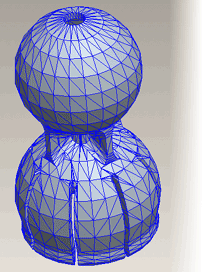
Fig1. Under Tessellated
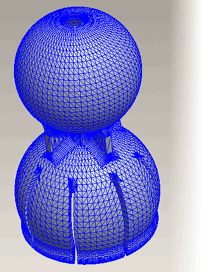
Fig2. Good
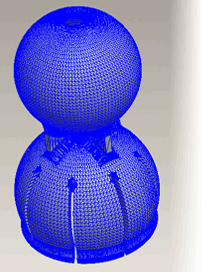
Fig 3. Over Tessellated |
STL employs a method of representing surfaces of a CAD model as a closed volume mesh comprised of triangles. The quantity and size of these triangles dictate how accurately the surface mesh represents the actual product. The following example illustrates this concept using a triangulated mesh to describe a common circle:
|
Desired Shape
|
Low Quality
|
Medium Quality
|
High Quality
|
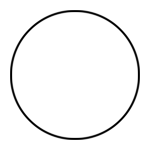 |
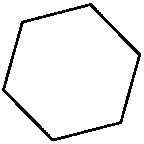 |
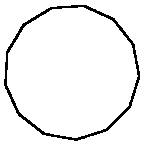 |
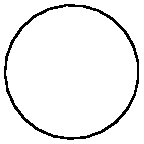 |
As the number of triangles increases and the relative triangle size decreases, the shape begins to more accurately represent the outline of a circle. This is often referred to as the "facet resolution." It is an important concept because parts constructed on RP equipment may require additional finishing or may not measure to accurate dimensions if the facet resolution is too low. CAD programs often contain optional settings that will give the designer some level of control over the quality of the STL file output. The most common settings or variables pertain to "Chord Height"(Deviation) and "Angle Control" (Angle). Chord Height is a term that numerically describes the maximum distance between the actual part surface and the tessellated surface of the STL file that describes the part.
The following illustration represents the concept of cord height:
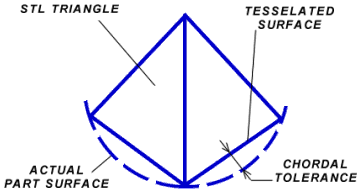
The images to the left show examples of different quality STL files. The images to the left show examples of different quality STL files.
The smaller the chord height, the more triangles required to describe a particular section of part geometry, and thus, better facet resolution. Angle control is another common setting which influences the tessellation of curves with relatively small radii in comparison to the overall size of the CAD model. Output of a high-resolution STL file does come with a trade-off. File size often becomes extremely large with low chord height and angle control settings.
STL files can be saved in ASCII or Binary format. Binary is the better choice of two. ASCII format creates very large file sizes. Parts that have an extremely large file size usually are in an ASCII format or contain over 150,000 triangles. Files such as these can cause problems with file transfer over the web and with the process for setting up Rapid Prototype machines. An indication as to if you have a good resolution STL file is by looking at the amount of triangles that were generated. On average an STL file (in Binary format) that has the number of triangles which fall between 25,000 and 75,000 will usually be a good resolution file. This varies between part designs, it is dependent on geometry. You can also look at the STL file and see the resolution |